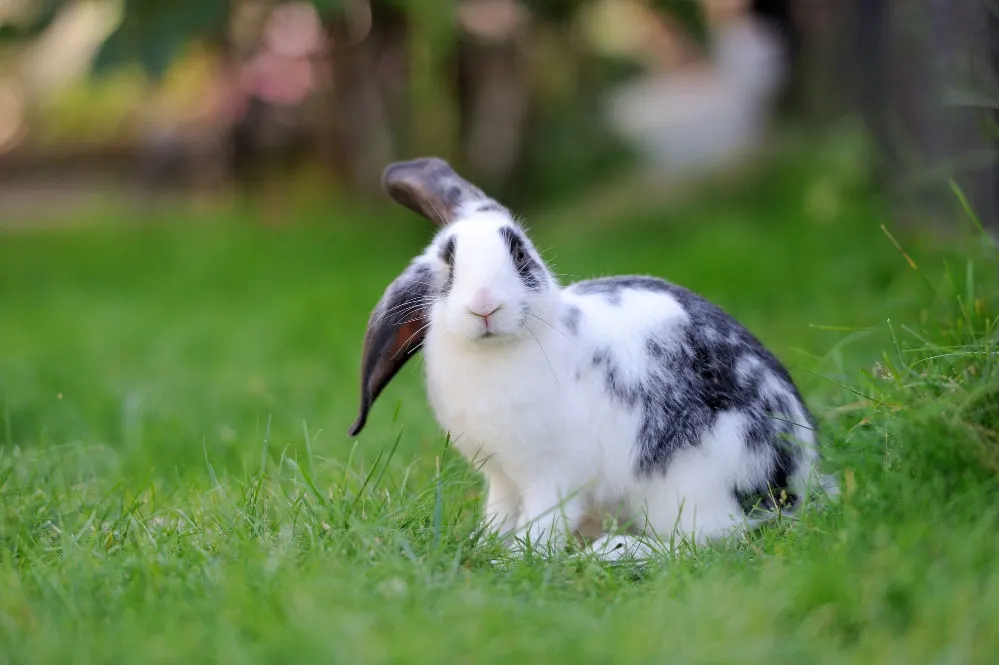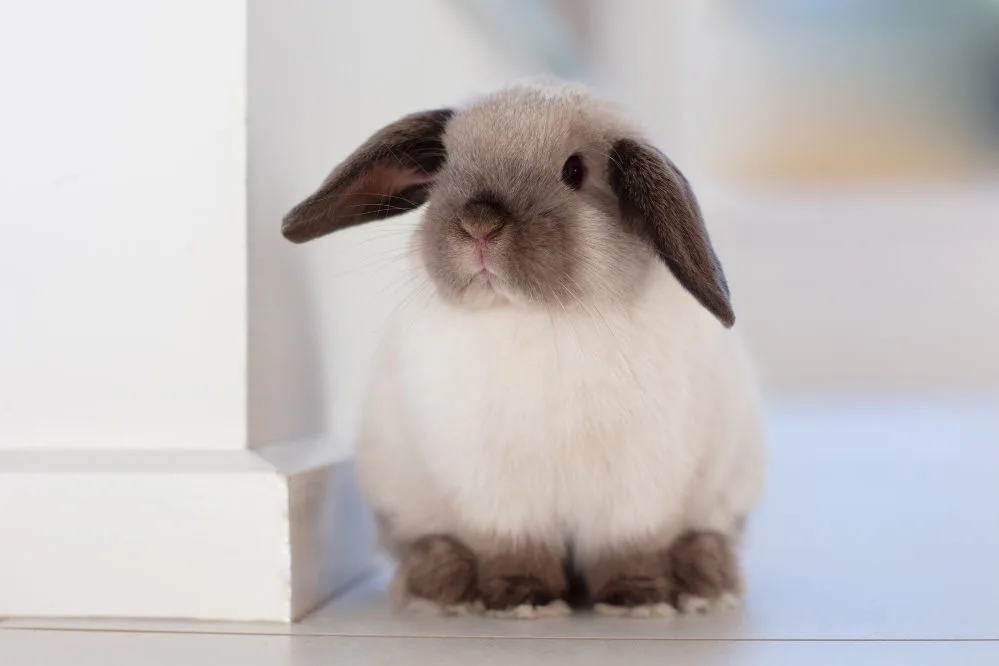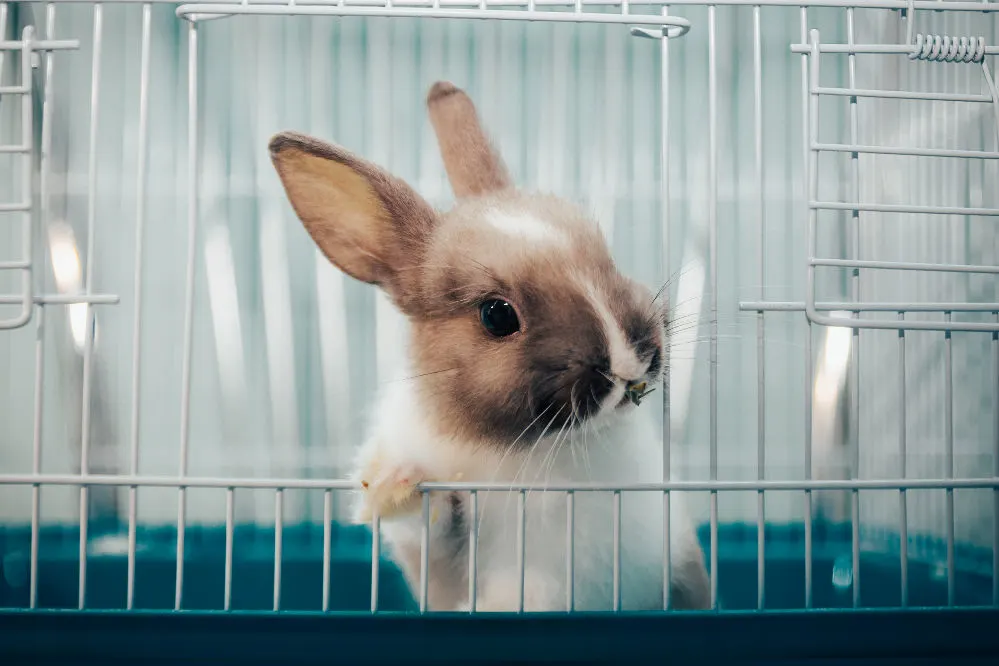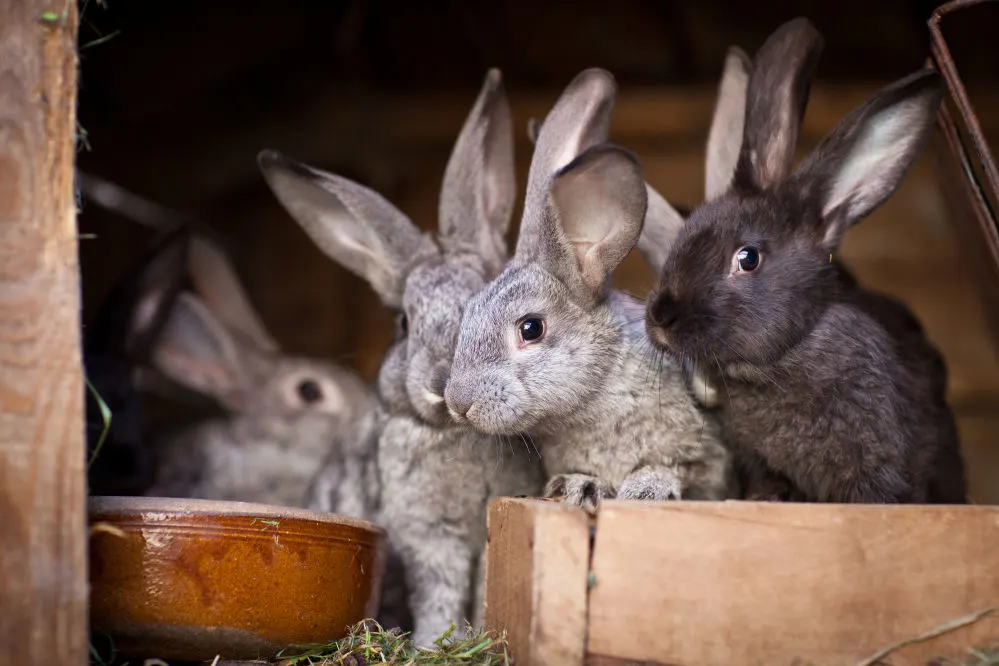So you’re relaxing on the couch, tuned in on your favorite series, with a bowl of grapes. And suddenly, your bunny hops towards you (or actually, your grapes), nose wiggling with excitement. Could it be that your rabbit wants to join in on snack time?
But then, you start to think: can rabbits have grapes? That’s precisely what this guide aims to unearth. Rabbits are known to have a predominantly veggie diet, but that doesn’t mean they can’t enjoy sweet fruit treats.
Also, they look super adorable while munching on a juicy fruit, so why deny yourself such a cute moment?

So let’s spill the beans (or, in this case, grapes) on everything you need to know before you give your furry friend this sugary fruit.
Next up: Find out if your pet rabbit can eat strawberry tops, too.
Can rabbits eat grapes?
Is it safe for rabbits to eat grapes? Yes, they sure can munch on grapes as they are non-toxic to bunnies. Both wild and domestic rabbits love the sweet taste. These delectable nibbles can be used for training and bonding as a reward for good behavior.
However, as much as pet bunnies adore these juicy bulbs, it’s best to feed them grapes in small amounts and as an occasional treat. Wild rabbits, for example, rarely have access to fruits and only consume them seasonally. This should be the same for indoor rabbits to help give them a diet that is as close to what nature intended as possible.
There’s just too much sugar in fruits for them to be a staple in your rabbit’s diet. In general, it’s a good idea to stick with leafy greens, pellets, grass, fresh hay, and veggies to avoid unnecessary health problems in the future.
That’s not to say bunnies shouldn’t satisfy their sweet tooth. It simply means that rabbit owners need to monitor how much fruit they have. And just in case you were wondering, these rules about grapes count for all rabbit breeds. So keep reading for more information on the nutritional value of grapes, their disadvantages, how they should be fed, and more.
Related Read: Can rabbits have mango?
Can baby rabbits eat grapes?
Kits and adult rabbits have entirely different dietary needs. And you do not want to feed a baby bunny any fruit whatsoever. Allow kits to drink on their mother’s milk for as long as they need, usually up to 11 weeks of age.
You can start feeding young rabbits nibbles of solid food at about three weeks old along with mommy’s milk — basically around the time their eyes have opened. If you don’t wait long enough, the baby bunny will likely get an upset stomach or even develop digestive issues as a result.

You’d want to start introducing new foods such as alfalfa pellets, as well as oat and Timothy hay in small quantities that cater to their sensitive digestive systems first. Shortly after weaning, you can start adding various fresh vegetables and finally fruits such as grapes, bananas, oranges, and apples (no seeds).
Health benefits & dangers of grapes
Let’s have a closer look at the benefits and dangers of feeding your rabbit grapes.
Health benefits of grapes for rabbits
- Grapes contain small amounts of fiber, vitamin K and B vitamins that may benefit bunnies.
- Grapes are rich in nutrients and antioxidants which may benefit their immune system.
- The high water content of grapes can help aid your rabbit’s digestive system and keep them hydrated.
- The vitamin C and potassium in grapes can help keep your bunny healthy.
- Most importantly, rabbits will enjoy this exciting snack as it could help strengthen your pet-owner bond.
Dangers of eating grapes for rabbits
- The high sugar content in grapes can cause digestive problems and weight gain that may even lead to diabetes.
- Excessive intake of grapes can result in severe bloating and diarrhea. If these symptoms aren’t treated, your pet bunny might experience liver failure, dehydration, and gastrointestinal tract stasis.
- If your bun-bun consumes far too many grapes, their tummy’s acidity level might change, preventing good bacteria from growing.
How to feed grapes to your rabbit
By now, you should have gathered that grapes and other sweet fruits are just an occasional treat and shouldn’t form a main part of the rabbit’s diet. But if you’re going to feed grapes to them, then only opt for fresh grapes and avoid large amounts.
You can give larger-sized rabbits the whole grape berry, but cut it into halves if you have a smaller bunny. You’ll always want to ensure the grapes are well-rinsed to remove any lingering pesticide residue. Wash your grapes under cool running water for 30 seconds to a minute to ensure it’s properly clean.
It’s wise to remove broken grapes or ones with signs of decay, as these will be no good for your rabbit’s health. Avoid giving them raisins, as these have no water and have a higher concentration of sugar and carbs — which can only harm them in the long run.
How frequently should I feed my rabbit grapes?
Try feeding your rabbit only about one or two grapes roughly once per month to be on the safe side. Do not feed them grapes more than once weekly.
How many grapes can you feed a rabbit?
The number of grapes depends on your rabbit’s body weight. But try and stick to about one or two grapes per week as a general rule of thumb.

Red grapes vs. green grapes
Does the type of grape matter? Not at all. Rabbits can digest any color of grape as long as they are fresh and washed, as emphasized already.
Organic grapes vs. commercial grapes
Organic grapes are grown without synthetic fertilizers, synthetic pesticides, or other chemicals that are harmful to the environment and those involved in growing grapes. This means they also do not contain toxic pesticide residue, unlike regular grapes.
It’s pretty common to grab a fruit and bite into it immediately, only to realize afterward that you haven’t rinsed it yet. So, to be safer, try buying organic grapes every single time, if possible, to protect yourself and your rabbit from harmful residues.
What part of the grape can rabbits eat?
Worried that there are bits of the grape that your bunny can’t or shouldn’t eat? Worry no more, because all the answers are here.
Grape seeds
Grape seeds aren’t toxic to rabbits, unlike apple seeds. However, you still want to try and give your furry friend seedless grapes, as this will help prevent choking hazards. The seeds are hard and small, which can easily become stuck in a rabbit’s throat or digestive tract.
In addition, large quantities of grape seeds can cause intestinal blockages or other problems with your rabbit’s stomach.

Grape skin
Grape skin is edible, but you definitely want to remove it before feeding it to your bunny. The skin may lead to kidney failure over time if given regularly.
Grape stems
Grape stems, or the pedicel, is totally safe for a bunny to consume. In fact, your rabbit will most likely love eating the stems, which are a great source of fiber, too.
Grape leaves
Rabbits can safely eat grape leaves. These can provide plenty of antioxidants and fiber, which promotes a healthy diet. However, opt for dark leafy greens like bok choy, romaine lettuce, cilantro, mustard greens, and broccoli as these will be much better for your rabbit.
Grape juice
Commercial grape juice often has added sugars, which are bad for your bun, so avoid these completely. Fresh grape juice can be given, but only in the tiniest amounts as it’s so sugary. Overall, giving the whole grape is better as fresh grapes contain more nutrients and fiber, and bunnies will enjoy chewing on them.
Wrapping up — can rabbits have grapes?
There you have it! The nitty-gritty of everything you need to know when feeding your bun-bun grapes.
Feeding grapes every now and then can provide your furry companion with some essential nutrients. Adding a juicy fresh fruit like grapes once a month to their diet can benefit your pet rabbit’s health thanks to the vitamin and mineral content, not to mention fiber.
It’s just super important not to go overboard with such a sugary snack to help prevent obesity, diabetes, etc. Also, remember to give the seedless grapes a good wash, or better yet, try getting your hands on organic grapes before serving them to your little furry boss.
Want to know more about your rabbit’s health without hitting up the vet? Get the scoop on their poop then with this ‘what does rabbit poop look like?’ post — it’s a great indicator of your bunny’s wellbeing.
Steph Dyson is a travel journalist by trade but a lover of all small pets. She’s been a pet mum to everything from gerbils to guinea pigs, rabbits to hamsters, and fish to dogs of all shapes and sizes. She wants to share her years of experience with small pets and make Small Pet Guides the go-to website for pet owners seeking information and care advice.

